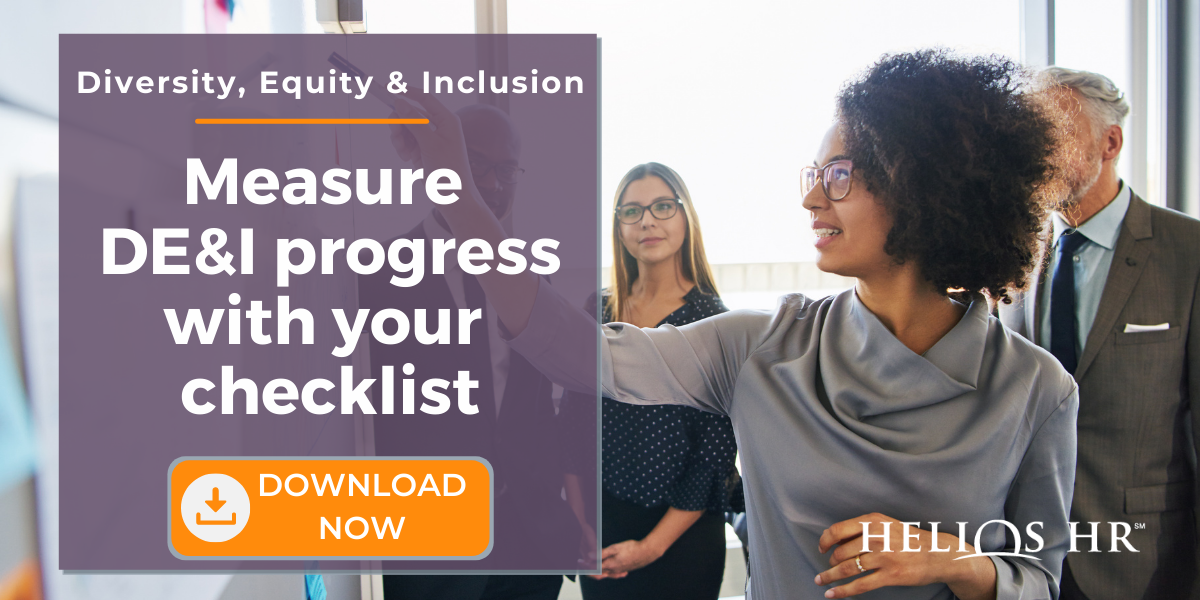By: Claudia Lopez on September 3rd, 2020
Why Your Hiring Practices Could Be Part of the Diversity Problem
Outdated hiring practices are failing us.
Companies are frustrated, realizing that differential treatment by race and other factors are still present in their current recruitment practices. Even when hiring managers are given training, resources, and have the best of intentions, research shows that familiar old ways of recruiting often lead to hiring candidates who are demographically similar.
More and more, I’m seeing that employers are looking for better hiring strategies that can help them evaluate candidates fairly, reduce bias through the recruitment process, and build more diverse and inclusive teams.
All of us want to feel confident knowing that hiring managers across the workforce are selecting candidates based on valid criteria and evaluating facts about the candidate’s background instead of opinions or a “gut feel”. Unfortunately, most common and familiar hiring practices today are perfectly designed to perpetuate bias during the recruitment process.
Reducing bias during the recruiting lifecycle is not only difficult, it requires us to exercise conscious, effortful, and balanced thinking through the entire hiring process. Fortunately, better approaches to hiring practices are on the rise.
You can improve hiring accuracy and reduce bias during the recruitment process by implementing small changes to your current hiring practices today. As a certified diversity recruiter, here are some tips that I’ve been using personally and sharing with my clients below.How to Eliminate Bias in the Hiring Process with 7 Steps
Consider focusing on these 7 steps during the recruitment process to help eliminate bias in your hiring practices:
1) Make Your Diversity Statement Clear
-
- Make sure that your company website and employer branding materials emphasize your diversity statement, specifically highlighting steps and actions taken to build and promote diversity and inclusion across your organization.
-
- Don’t rely just on employee referrals. When you hire who you know, it can lead to hiring more people similar to your current employee population demographics.
2) Review the Job Advertisement
-
- Start by sharing a brief overview of why the job is important (the purpose) and how the role will make an impact in the company or community as a whole. Pay close attention to words that can signal to candidates that they aren’t a good fit. Avoid superlatives, and gender-specific pronouns, and masculine/feminine associate language.
- Prioritize key skills of what is required versus what is nice to have. Build-in as much flexibility as possible.
- Avoid a long list of qualifications or responsibilities. Instead, focus on 5-7 bullet points that describe the key functions of the job.
3) Focus on Resume Selection
-
- Chose an experienced team member to screen resumes. Someone who considers all the different paths that a candidate can take, a person that thinks broadly, and is interested in screening people into your process not out.
- Avoid creating a preference for pedigree, do not take mental shortcuts when you read a resume by looking for prestigious educational institutions or reputable previous employees. This provides an unfair advantage to some candidates while excluding other highly qualified individuals from the process. Remember to be open-minded, don’t assume all candidates were offered equal opportunities for college, certifications, or advancement in previous organizations.
- Avoid affinity bias or having favorable opinions of anyone who reminds us of ourselves. Be aware that we tend to be drawn to candidates who made similar choices in their educational backgrounds, previous employers, etc.
4) Cancel the Cover Letter
-
- Instead of requesting a traditional cover letter, consider asking candidates to submit a writing prompt. These questions will help hiring managers equally assess competencies before judging a candidate’s pedigree, career trajectory, or appearance. Additionally, it gives candidates the opportunity to think about how their experience fits in with your business demands.
5) Create an Inclusive Interview Process
-
- Avoid abstract attributes. Interviewers and hiring managers conducting interviews all have different concepts of the meaning of abstract attributes. According to a research study by Harvard Business, humans are unreliable radars of other humans. The study refers to the systematic pattern of error as the Idiosyncratic Rater Effect: “My rating of you is not driven by who you are, but instead by my own definition of quality. On average 61% of my rating of you is a reflection of me”.
- Consider a Structured Interview Approach based on the top key competencies of the job and evaluate candidates individually of each other. Avoid asking questions about attributes and instead focus on assessing someone’s competencies and their ability to do work.
- Attributes describe personal characteristics.
- Competencies or job knowledge tends to focus on a specific functional area. For example, someone’s ability to develop a marketing campaign or a revenue analysis report. Competencies can be thought and tested and are easier to evaluate by interviewers.
6) Sample Work Testing
-
- Consider giving the candidate a "homework" assignment prior to the second interview. For example, discuss one to two real-world challenges and have the candidates come up with a solution. Keep it simple: focus on content not style, and have candidates offer a solution to a real business issue.
7) Debrief With Your Team
-
- Keep the focus on facts and not opinions, give interviewers written questions to reflect on, and ask them to rate the candidate’s response by using a rating skill from one to five.
- Consider challenging the interview team by asking questions like, "What are the candidate’s strengths?" And, "what assistance will they need to be successful?"
Adopting more evidence-based recruitment processes that focus on eliminating bias and improving hiring accuracy should be on top of every employer's list.
Organizations must change their recruitment practices to better support hiring managers, without that support a tumbling series of unintentional cognitive biases can easily cascade into systemic bias. Small mistakes in the hiring process have an enormous effect on who we decide to hire.
You shouldn’t want to hire people to fit in, instead focus on hiring people who move your organization forward and add something new to the team. That's what will drive innovation and growth.





